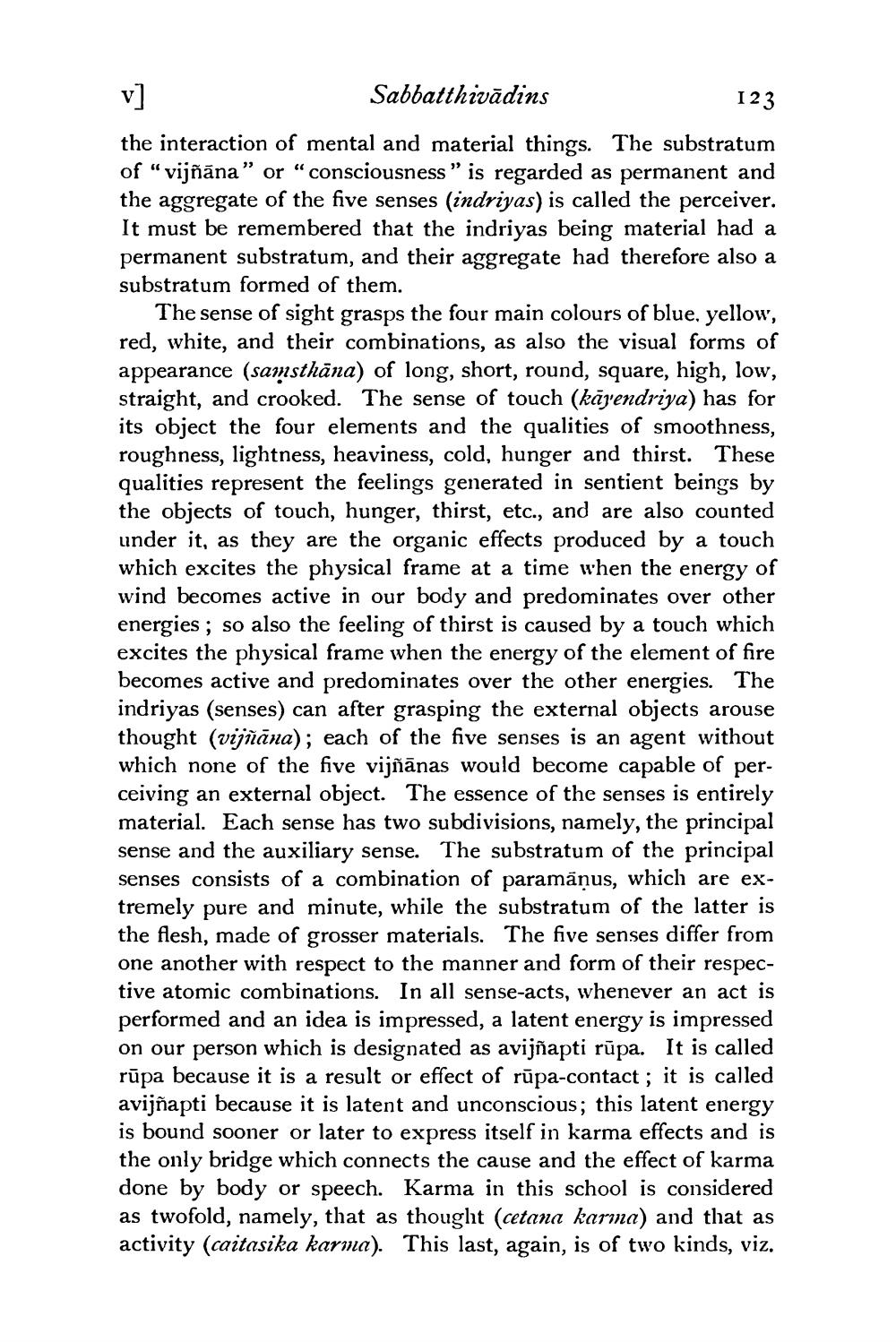________________
123
Sabbatthivādins the interaction of mental and material things. The substratum of "vijñāna" or "consciousness” is regarded as permanent and the aggregate of the five senses (indriyas) is called the perceiver. It must be remembered that the indriyas being material had a permanent substratum, and their aggregate had therefore also a substratum formed of them.
The sense of sight grasps the four main colours of blue, yellow, red, white, and their combinations, as also the visual forms of appearance (samsthāna) of long, short, round, square, high, low, straight, and crooked. The sense of touch (kāyendriya) has for its object the four elements and the qualities of smoothness, roughness, lightness, heaviness, cold, hunger and thirst. These qualities represent the feelings generated in sentient beings by the objects of touch, hunger, thirst, etc., and are also counted under it, as they are the organic effects produced by a touch which excites the physical frame at a time when the energy of wind becomes active in our body and predominates over other energies ; so also the feeling of thirst is caused by a touch which excites the physical frame when the energy of the element of fire becomes active and predominates over the other energies. The indriyas (senses) can after grasping the external objects arouse thought (vijñāna); each of the five senses is an agent without which none of the five vijñānas would become capable of perceiving an external object. The essence of the senses is entirely material. Each sense has two subdivisions, namely, the principal sense and the auxiliary sense. The substratum of the principal senses consists of a combination of paramāņus, which are extremely pure and minute, while the substratum of the latter is the flesh, made of grosser materials. The five senses differ from one another with respect to the manner and form of their respective atomic combinations. In all sense-acts, whenever an act is performed and an idea is impressed, a latent energy is impressed on our person which is designated as avijñapti rūpa. It is called rūpa because it is a result or effect of rūpa-contact; it is called avijñapti because it is latent and unconscious; this latent energy is bound sooner or later to express itself in karma effects and is the only bridge which connects the cause and the effect of karma done by body or speech. Karma in this school is considered as twofold, namely, that as thought (cetana karina) and that as activity (caitasika karma). This last, again, is of two kinds, viz.




